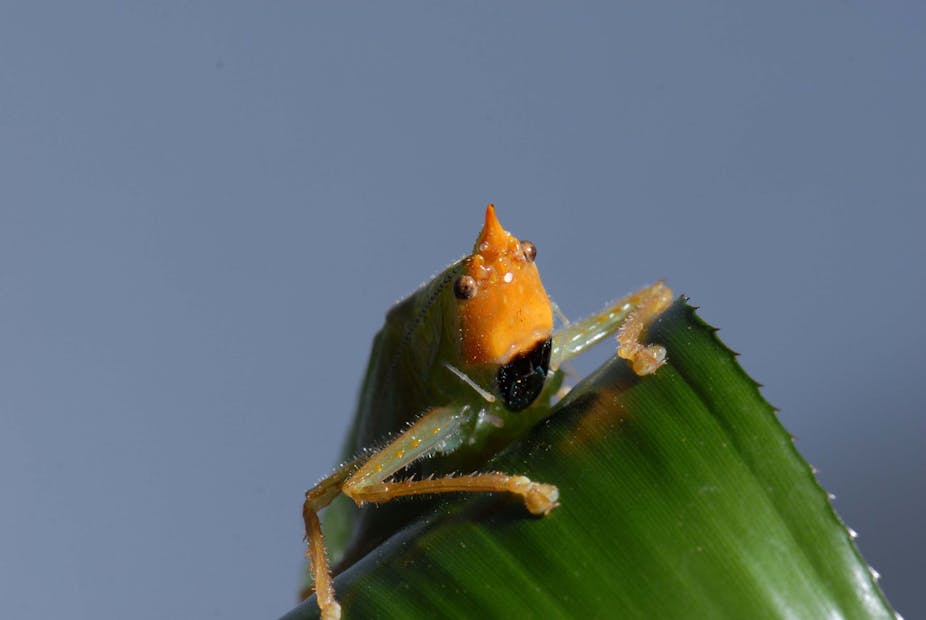The ears on a South American rainforest katydid’s legs work nearly the same way human ears do, a new study has found, showing that animal groups as apparently unrelated as mammals and insects have evolved with similar body bits.
Mammal ears work in three stages to convert air vibrations to sound. First, the acoustic waves hit the ear drum, or tympanum, which vibrates. Second, tiny ear bones boost the volume as the vibrations travel along to the fluid of the cochlea. Third, the inner ear’s hair cells turn the vibrations into electrical impulses that the brain can read as sound.
The new study, authored by researchers from Bristol University in the UK and published today in Science, found that the katydid’s tiny ears work in an equivalent way.
“Thus, two phylogenetically remote organisms, katydids and mammals, have evolved a series of convergent solutions to common biophysical problems, despite their reliance on very different morphological substrates,” the study said.

Susan Lawler, Head of the Environmental Management and Ecology at La Trobe University, said it was a wonderful discovery.
“Hearing in insects is quite diverse. They detect sound through a wide variety of mechanisms, including fine hairs on the outside of their bodies, via structures at the base of their antennae, and occasionally through complex ears that are usually made of a thin cuticle (or tympanum) backed by an air sac to detect vibrations. These ‘ears’ can be located on the thorax, abdomen, legs or wings,” she said.
Dr Lawler noted that the researchers found the katydid’s ear drum did not vibrate directly onto an air sac but “activated a structure that then transferred vibrations to a fluid filled space where receptor cells detect the vibrations.”
“This is analogous to the human ear where the eardrum transfers vibrations to a fluid filled space via the tiny bones of the ossicle,” she said.
“This discovery shows a remarkable convergence – that is, the evolution of similar structures in unrelated species. The wings of birds and insects are analogous – both allow the animals to take to the air but they evolved along quite different pathways,” said Dr Lawler.
“In this case, the transfer of sound has been captured in a similar way in vastly different animals, highlighting the way in which evolution can produce similar solutions to similar problems.”

